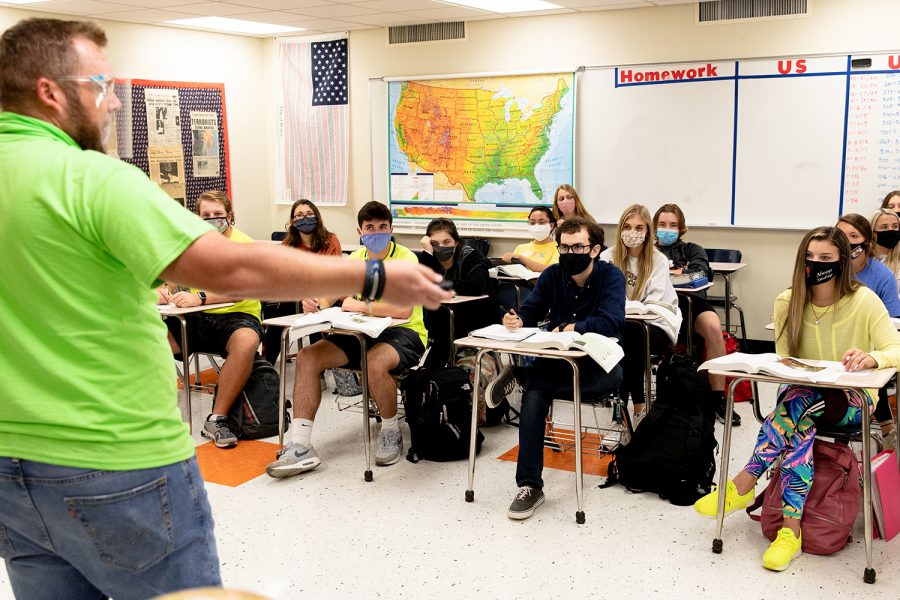Conversations stopped
COVID-19 cuts down discussion in classrooms
Photo by Caden Rainwater
History teacher Danny Williams leads his class in discussion. Every student on campus is required to be masked.
October 25, 2020
In years past, teachers, mainly in the English and history departments, relied on discussion to drive the class. Often, English teachers count on discussion to engage students in books, and history teachers lean on conversation to help students better grasp historical events and people. Discussion is also used to hear the thoughts and opinions of students, and many history teachers love bringing up current events that spark debates.
“Before quarantine, my class was grounded in discussion,” English teacher Anita Badgett said. “Novels would be assigned for homework, chunks would be read, and then students would participate in class discussion.”
With that being said, the spring of 2020 changed the blueprint of these types of classes. When school shut down in March, forcing the introduction of streamed classes, these once thriving conversation-based classes began to see declines in participation and the engagement of students. Being stuck at home with no in-person interaction made it difficult to grasp every subject. Students had to want to attend to learn from Zoom classes and Google Classroom assignments.
“Even for the most self-motivated, grade-driven students, remote learning is difficult,” Badgett said. “There are so many distractions.”
With the normal school day coming to a screeching halt, students met the challenge of continuing to learn, despite the circumstances. Students in Chuck Zach’s AP US History class were forced to prepare for the AP Test differently than they had been the last eight months.
“[Students] started the year in the classroom, knowing that dynamic,” Zach said. “[Then] that dynamic changed dramatically. It was a lot harder to gauge if they were doing their work.”
When this school year arrived, students were given the opportunity to choose between in-person school and remote learning. For in-person students, many things have drastically changed the outlook of many conversation based classes. Masks are required to be worn and may be the cause of the decline in student participation.
“I find myself asking students to ‘say that again’ many times during the day,” Badgett said. “I am sure there are students who don’t voice their thoughts and ideas simply because they don’t want to have to yell so everyone can hear them.”
Teachers are faced with the difficulty of making sure both online and in-person learners are at the same rigor, making it more difficult for in-person kids because there are less papers and more Google docs and forms.
Remote students also face difficulties in their new learning environment. There is little to no interaction, making it harder for them to engage in class discussion.
“[Remote learners] don’t really have the chance to ask as many questions,” Zach said. “They are stuck having to listen and observe as opposed to being able to get feedback and ask [questions].”
Even though they can unmute or type their questions out, taking a discussion-based course from home is not the same as being there in-person.
“If [remote students] have something to add to the discussion, they either voice their thoughts or type them and I read them to the class but it is difficult and not the same,” Badgett said. “Sadly, the fact is, no matter how hard the remote students try, it is hard to do much more than observe. Meets just doesn’t allow for the same interaction that sitting in the same room with someone does.”
















